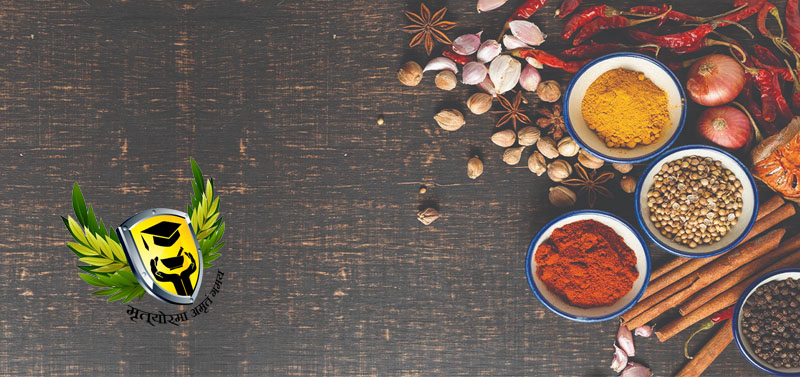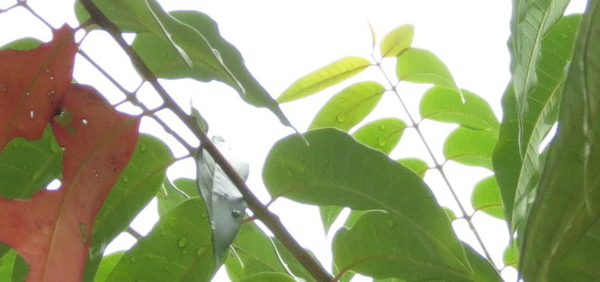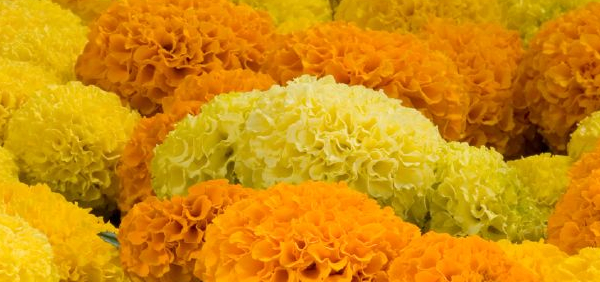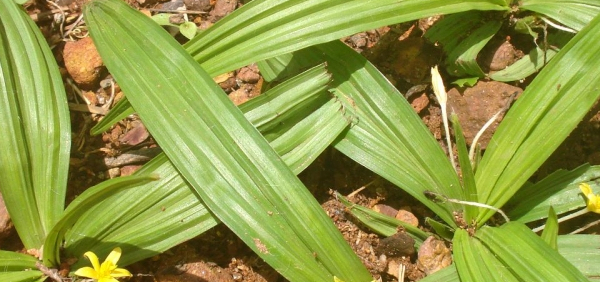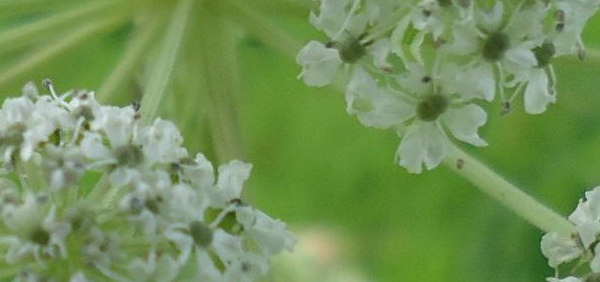priyala :

Charoli is called Priyala in Ayurveda. It is used as a cooking spice. It is aphrodisiac, nourishing, cardiac tonic but it may cause indigestion.
Buchanania lanzan is a deciduous tree which produces seeds that are edible to humans. It is known as Chironji (or Charoli). These almond-flavoured seeds are used as a cooking spice primarily in India. Buchanania lanzan is cultivated across India, primarily in the northwest. After the hard shell is cracked, the stubby seed within is as soft as a pine nut.
The charoli seed is lentil-sized, is slightly flattened and has an almond-like flavour. Though they can be eaten and used raw they are often toasted or roasted before use, as this intensifies the flavour.
They are commonly used in sweets in India. However, they are also ground into powders for thickening savory sauces and flavoring batters, and stewed into rich, meaty kormas.
Charoli seeds are used in the Ayurveda and Unani systems of medicine.
Taxonomical Classification
Family: AnacardiaceaeVERNACULAR NAMES
Sanskrit: Chironji चिरौन्जी, Chirounji, Chiraunji, Charoli, Priyal, charoli, chiraunji, chironji, kath bhilawa.English: almondette, cheronjee, cuddapah almond
Urdu: chironji.
Telugu: Sara chettu, Morli, chaara, chaarumaamidi, saaraparuppu.
Marathi: char, chareli, charoli, chronji
Gujarathi: Charoli, चारोळी
Tamil: Karaka, சாரப்பருப்பு, saaraparuppu, saarai paruppu, caraiparuppu, pulimaangay.
Malayalam: cheru, kalamavu,mungalperlu.
Kannada: Nurkal, chaaraparuppu, chirapuli
Arabic: chirongi, habulsamnah
Persian: nakulekwajah
Mentions / Gana
Amradi Varga (Dhanvantari Nighantu)Amradi varga (Raja NIghantu)
AmradiPhala Varga (Bhav prakasha)
Kakolyadi Gana (Sushruta Samhitha)
Nyagrodhadi Gana (Sushruta Samhitha)
Oushadhi varga (Kaiydeva Nighantu)
Phala Asava Yoni (Charaka Samhitha) - 26 fruit source of alcoholic preparations
Phalavarga (Sushruta Samhitha)
Shramahara (Charaka Samhitha) - group of herbs useful to relieve tiredness,
Udarda prashamana (Charaka Samhitha) - group of herbs useful in allergic skin diseases
Definition
Khara skandha – stem is rough to touch
Sannakadru – the tree bends forward
Dhanushpata – bark is used to prepare cloth for bows.
Chara, Dhanuspata, Rajadana,
Bahula valkala – has thick bark
Tapasesta, Dhanushpata, Drakshaphala, Munipriya, Amlaphala, Lalana, Khadru,
Snehabeeja – seed yields oil
Synonyms
Synonyms in Ayurveda: priyala, kharaskandh, bahalvalkal, snehabij, lalan, tapaspriya, caroli, ciraunji, karakaRasa: Madhura
Guna: Cala Guru Snigdha
Veerya: Sheetha
Vipaka: Maduram
Phytochemistry:
Kaempferol
Leaves – flavonoids and glycosides
Parts used for medicinal purpose
Bark, Nuts, Seed kernel, ,Dosage:
Bark decoction 50-100 ml
Seed kernel – 10 – 20 grams per day.
How to use chironji –
It can be consumed raw or roasted and used as ingredient in cooking / dishes
Therapeutic Uses:
Health Benefits Of Chironji:
Bark – Balances Pitta and Kapha Dosha,
Asraghna – useful in blood disorders such as abscess, skin disorders, bleeding disorders such as menorrhagia, nasal bleeding etc.
Chironji nut uses:
Madhura – sweet
Amla – sour
Madhura Vipaka – undergoes sweet taste conversion during digestion process
Guru – heavy to digest
Snigdha – unctuous, oily
Sara – induces mobility, causes diarrhoea, purgation, relieves constipation
Balances Vata and Pitta Dosha
Indicated in:
Daha – burning sensation, as in gastritis, neuropathy, burning sensation in eyes etc
Jwara – fever
Trushna – excessive thirst
Brumhana – nourishing, nutritious
Vrushya – aphrodisiac, improves visor
Balya – improves strength and immunity
Charoli seed / seed kernel uses
Madhura – sweet
Vrushya – aphrodisiac, improves vigour
Balances Vata and Pitta Dosha
Hrudya – acts as cardiac tonic, congenial for heart
Atidurjara – difficult to digest
Snigdha – unctuous, oily
Vishtambhi – may cause constipation
May cause Ama – A product of indigestion and altered metabolism
Chironji oil
Chironji oil – Priyala Taila
Madhura – sweet
Madhura Vipaka – Undergoes sweet taste conversion during digestion process
Guru – heavy to digest
Increases Kapha Dosha
Keshya – Improves hair strength, promotes hair growth
Sheetala – coolant
Balances Vata and Pitta
Abhishyandi – sticks to the inner channels
Srushta mutra – acts as diuretic
Agnisada – may cause indigestion
Chironji oil is applied on hair to relieve grey hairs.
Chironji is used in making a dish called Shashkuli (Called Chakkuli in Kannada), along with other ingredients like black gram, ash gourd pulp etc – reference: Kaiyadeva Nighantu, Krutaanna Varga
Chirounji (Buchanania lanzan) mitigates vata effectively, is unctuous, cold in potency; its marrow is sweet, aphrodisiac,mitigates pitta and vata,
Kola majja (fleshy part of the ber fruit) is similar in properties with priyala majja (Seed kernel) relieves thirst, vomiting and cough. Ashtanga Hrudaya Sutrasthana 6/124
Charaka Sutrasthana 27/291
Oil of Priyala (Buchanania lanzan Spreng) is sweet in taste, heavy and aggravator of Kapha. Since it is not very hot, it is useful when Vata and Pitta are jointly aggravated. Charaka Sutrasthana 27/291
Chironji for skin
Chironji seeds along with other herbs like Tinduka, Manjishta (Rubia cordifolia), Usheera (Vetivr) etc are processed to prepare an oil, useful in treating Sadyovrana – acute ulcers and wounds.
Seed powder is used for Udvartana (powder massage) to slough debridement (remove top layer) in skin diseases.
The priyala seeds acquired from priyala fruit is colloquially known as saara paruppu in Tamil; as chronji in Hindi. The priyala fruit is commonly known as Apricot fruit in English.
The Apricot fruit is sweetish in taste. It is nourishes the tissues and increases the virility.
The epicarp of the apricot aggravates the pitta dosha.
The pulp or mesocarp of the apricot fruit is sweetish in taste, pleasant to eat, and appeases the pitta doSha.
Precautions:
It is not good to consume the nuts or seeds while having indigestion problem and during constipation.
It is used during pregnancy, lactation and in children.
Ayurvedic Formulations:
Common Ayurvedic Formulations of priyala with their IndicationsChandanadi Taila - a natural coolant oil. It is used to relieve burning sensation, dizziness, etc. External - Rakta vaatam, Nethra rogam, Rakta pitam.
Ashoka Ghrita - Herbal ghee used in gynaecological disorders.
Puga Khanda - used in the treatment of vomiting, gastritis, dyspepsia, abdominal colic pain, dizziness
- » Classification and names of priyala
- » Synonyms and definitions of priyala
- » Drug Properties of priyala
- » Chemical Constituents of priyala
- » Standardization of priyala
- » Parts used and Dosage of priyala
- » Morphology and Histology of priyala
- » Distribution and Conservation of priyala
- » Cultivation of priyala
- » priyala in the market
- » Medicinal Uses of priyala
- » Researches and clinical trails of priyala
- » priyala in other sytems of medicine
- » Ayurvedic formulations with priyala
- » Images of priyala


